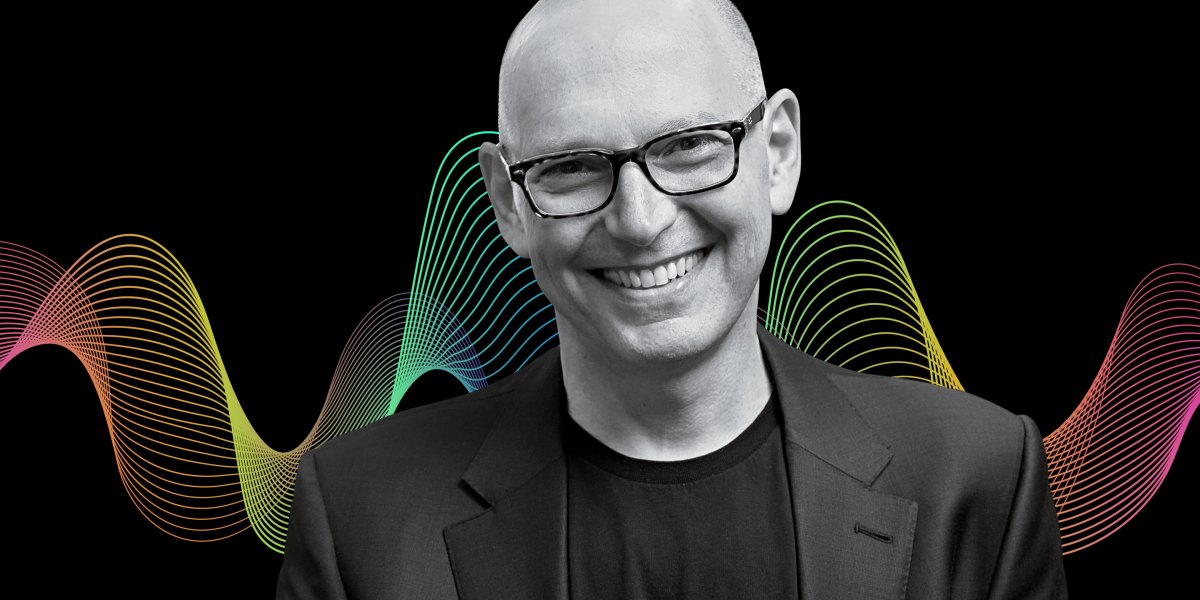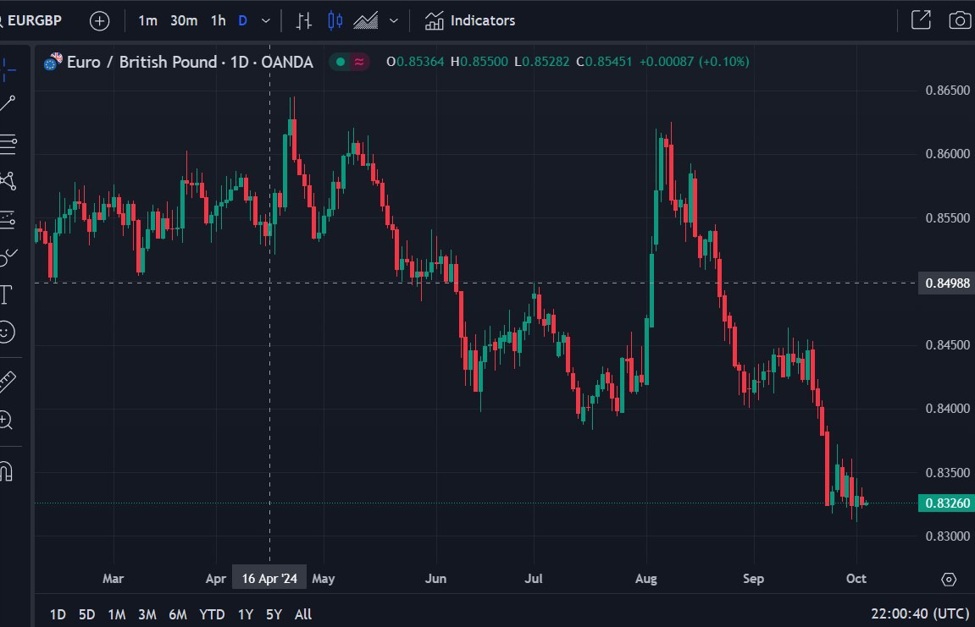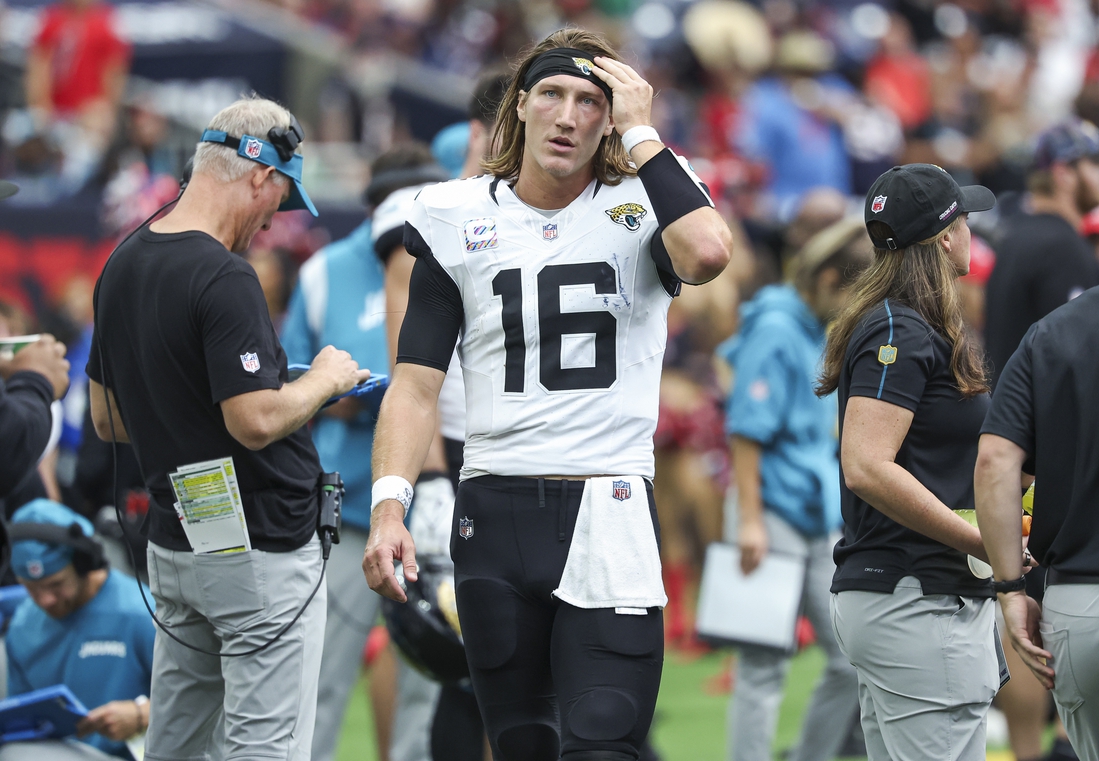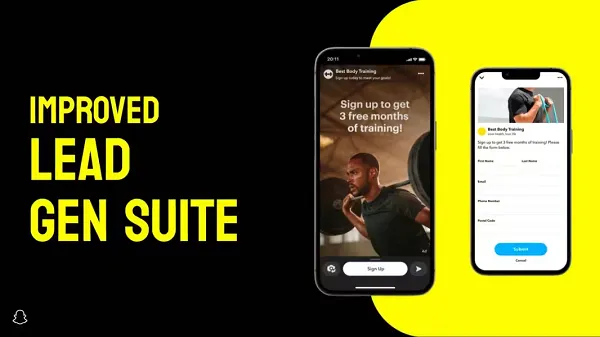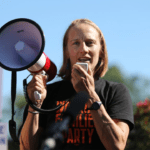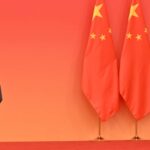

On this episode of Fortune’s Leadership Next podcast, host Diane Brady talks to Indeed CEO Chris Hyams. The interview was conducted live in front of an audience at Deloitte’s Next Generation CEO Program. During the discussion, the conversation covered Hyams’ nontraditional route to the C-suite, which included jobs at an adolescent psychiatric hospital and a two-year stint as a full-time (aspiring) rock star. The hospital job, he says, taught him lessons in empathy that he has carried forward throughout his career. Hyams also talks about the surprising impact AI is already having on the job market and the reason his 27-year-old daughter is top of mind when planning the future of Indeed.
Listen to the episode or read the transcript below.
Transcript
Diane Brady: Leadership Next is powered by the folks at Deloitte who, like me, are exploring the changing roles of business leadership and how CEOs are navigating this change.
Welcome to Leadership Next, the podcast about the changing rules of business leadership. I’m Diane Brady.
Chris Hyams started his career as a teacher, a drug addiction counselor, and a wannabe rock star. Today, he’s CEO of Indeed.com, one of the world’s largest job sites. He tells us how he got that job, but also what he’s discovered from the treasure trove of data that Indeed has collected it that tells us so much about how we work, what gets people hired, and how the world of employment is being shaped by forces like demographics and AI. Take a listen.
[Interview begins.]
Hello, everybody. For those of us who are on our podcast, that we are down here in Texas at Deloitte University, and I always love doing it before a live audience. We are with Chris Hyams of Indeed. And we are with the Deloitte Next Gen CEO program. So we are sitting with the leaders of today and tomorrow. Chris, good to see you.
Chris Hyams: Good to see you. Thanks for having me.
Brady: And those who can’t see, of course, you know, this is a between-the-flowers moment with you and I. So I feel like the first question I should ask anybody who is in charge of one of the world’s premiere job sites, you’ve got all kinds of data, what was your first job?
Hyams: Well, my first job ever was I grew up spending a lot of time hanging out in my grandfather and my dad’s offices. For some reason, I just thought that work was, I don’t know, it just seemed so exciting to have this place. And so the first job that I ever went to regularly was working for my dad in his office, which was getting coffee for…
Brady: Did he pay you?
Hyams: He did not pay me. It was getting coffee for people and making the Xerox copies and collating Xerox copies. That was that was my first job. My first job out of college — I did a bunch of stuff during high school —my first job out of college, though, was working at an adolescent psychiatric hospital on a chemical dependency unit, working with young addicts and alcoholics. And that set me off on a on an interesting path of doing a variety of different things.
Brady: And I think, okay, so that’s that’s one of the more unusual ways to start working, working with adolescents with addiction problems. How do you pivot from that into both being an entrepreneur and then of course, your career at Indeed.
Hyams: I think pivot suggests like a quick turn. So a pivot is the wrong word for me. I ended up basically pursuing a number of things in succession that at the time just seemed like the next right thing. The most interesting and fascinating thing, I started doing this work I wanted to do work with adolescents. I had this job. I spent six months working in this program, and it was extraordinarily challenging, unbelievably rewarding, eye opening, I worked with a bunch of really incredible people, and it really helped, I think, to develop a lot of compassion for others and their challenges. Part of what was going on, though, in a lot of maybe some of the threads of where I ended up jumping from place to place was that I had met my now wife, then girlfriend, and I ended up following her around a little bit and so I ended up having to find another job.
So I moved from Los Angeles, where I’d grown up and was working in this hospital. My wife and I had met in college. She moved. She’s from New York, I’m from L.A., so she moved to a small town in Vermont. Woodstock, Vermont, 3,000 people. And after six months of being apart, I just packed up the car and drove to Woodstock. Wanted to find work in the same field, could not at the time and so I started substitute teaching on the side, waiting for something to happen. And then I ended up getting hired full time in Woodstock as a high school special education teacher. And again, just sort of threw myself into it and was completely bowled over by, again, the people that I worked with and the opportunity to really connect to at deep level with these kids. I got hired by another program and taught another year the next year at another high school, Hartford High, in White River Junction, Vermont. And then Lizzy, my still-then girlfriend, soon-to-be wife, went to graduate school in Los Angeles. And so moved back to L.A. and at that point I decided to try to pursue another passion of mine. I’ve been a musician my whole life and basically played music full-time professionally for two years, tried to become a rock star, did not become a rock star.
Brady: We should mention you have the shoes of a rock star for those who can’t see you.
Hyams: And my standard line is I would do it all over again. I mean, it was, I left nothing on the table there. And then what happened, so again, there’s no direct connection between those other than I was following Lizzy around, which turned out to be, oh, we’ve been married 32 years now. Those were good decisions at the time for my life. She got a job at Rice University in Houston, Texas, as an academic librarian. And so that brought us to Texas. We moved to Houston in 1993. I could take undergraduate classes as the spouse of a staff member, and this was 1993 and a little bit out of left field, I thought, you know, this computer science thing could be interesting. So this was before anything that looks like the tech industry that we have today.
Brady: It’s even pre-Netscape, isn’t it?
Hyams: Oh, yeah, it’s very pre-Netscape. It’s pre-Mosaic, which was the first web browser, but that’ll happen. So part of my story is also very much right-place, right-time. So I decided to study. I took five classes my first semester, about three weeks in and realized this is what I was going to do for the rest of my life. But at the time I had no interest in business and there wasn’t really a software industry, so I thought I’ll get a Ph.D. and I’ll teach, I’ll teach this. And somewhere along the way, basically in the three years that I was there, Mosaic came out, the first version of the Java programming language, the Linux operating system, and Amazon.com all launched in that three years. I ended up with a master’s in Computer Science and Austin Startup had hired a bunch of young people from the graduate program that I was in, and I figured, okay, I’ll go there for a couple of years and then go back and get my Ph. D. and never came back.
Brady: Never came back. Well it’s interesting because serendipity is such an important part of your career. It makes me wonder. And before we get to you becoming the CEO from your first job and do you do you think that would the way the algorithm and the site operates now, would somebody like you get the kind of job that you ended up in? At Indeed.
Hyams: Definitely not. And that’s something we spent a lot of time talking about. We think we know how to do that now. We did not before. This November will be 20 years since Indeed was founded. So we have a thousand clients coming from all over the world for our FutureWorks conference. And so we’re doing a little look back on the last 20 years, how did we get here? But then looking ahead to the next 20 years. And as part of my story, I’m going to be talking about I have two daughters who are 27 and 28. The 28-year-old works in tech, has for the last 10 years. She has a very stable career. The 27-year-old has, since she was a little kid, wanted to make movies, and that’s all she’s ever wanted to do. And she worked every summer all the way through middle school, in high school, working for film festivals and working on sets and working for executives, graduated college with a job in film, and moved to L.A. to start her career in February of 2020. And then six weeks later…
Brady: The movie industry shuts down.
Hyams: And the rest of the world.
Brady: Has she found a job since.
Hyams: She spent two years working in a coffee shop again. She worked in the coffee shop all the way through college, went back, got another job. Then the writers and actors strike shut down the industry for another year. So she is at this stage right now where she’s done a number of things, incredibly brilliant, hard working, incredibly capable. You put her on something, she can do it. But her resume is confusing to anyone outside of film. So part of my story is we’re working right now to help Maisie and all the people like Maisie.
Brady: Hiring for potential, seeing the full person. Well, let’s go back then to that moment in your career when you were at Indeed and did what was it that made you a contender to be CEO, in your mind.
Hyams: Without going to too much depth, I was a software engineer for a few years, I got thrown into management and went from never managing anyone to being a VP of engineering in like 11 months because I was at a company with a bunch of 22 year olds and I was 30 and married with two kids. And so I…
Brady: Yup.
Hyams: I was really old. And the joke that somebody said about me was that I speak human and binary. And so part of it was that part of my story is doing the things that I did, working with adolescents, teaching school, I had a human connection that made me not prepared, but actually more qualified for the job than all the people who had just been coding since they were five. I ended up going into management. I left that company in 2004 and started my own company, [B-Side Entertainment], 16 people at its peak, so nothing like Indeed. But I had run a company and then I came to Indeed in 2010 to run the product team.
And so I think that the couple of things that that prepared me, I ran product and then I ran product and engineering, and then I ended up taking over the revenue side of the business as well. And so I wasn’t conscious of what was happening. But I know that Deka [Hisayuki Idekoba], who’s the CEO of our parent company, was preparing me for this role. So part of it was I was very consciously prepared by someone else for it. And we can talk, given this group, about how that worked. But part of it also was, I think, being a CEO and anyone who reaches any seniority in any department, you end up having to be responsible for things that you’ve never done yourself. When you’re a frontline manager or maybe a second or third line manager, it’s because you were better than other people at doing that job, and so you got the opportunity to tell other people how to do that job better. But as soon as you start taking over related groups, you’re trying to lead and manage and drive results in areas that you’re not the expert. Being a CEO is just a really extreme case of that. So being — I don’t want to have this word sound wrong — but like being somewhat of a dilettante, in that what I figured out along the way is that I’m pretty good at going from zero to 80 on something. I can learn enough about something to be useful. The last 20% is really, really hard and in any field. But part of being a CEO is being able to get [that], and the way that you do that is actually to be interested in a lot of different things. So I think my background of being interested and being all in on a variety of different.
Brady: And having a vision too. I mean part of the reason you got the job, obviously, was you had a vision…
Hyams: Part of the reason I got the job is because we’re a technology company and I have a strong technology background. So that was another, that was an important piece. If I didn’t have that, if I had not been able to run product and engineering and have the background doing that at this company, it would have been hard. But the other stuff made it possible, I think, to take on the rest of it.
Brady: Now you’re in an interesting situation. So just to make it clear for people. So Recruit is a Japanese company. Your sister company is Glassdoor, so I should ask if you check your Glassdoor reviews, because you’re all going to have them, of course, when you’re CEOs. But talk about that, having a parent company, you know, that was not clear that that was going to be in Indeed’s future when you first got there. So how did that impact the whole leadership equation? Is it like having a chairman or quite different?
Hyams: Yeah. So Recruit is, most of you probably don’t know Recruit, it’s now a 64-year-old Japanese company that is extremely well known and respected in Japan. We had never heard of it when we got acquired other than those who had actually, some of us were involved in meeting the company. So I had met them before. But when we got acquired in 2012, Recruit was pretty unknown in the U.S. It was basically a Japanese company with 97% of their revenue was in Japan. They’ve been around for 52 years with aspirations to become a global technology company and the acquisition of Indeed was a part of that. For us who were at the company at the time, we were, I think, maybe 500 people at that time. When I joined, we were about 130. We had been growing 100% year over year. And so we…
Brady: How big is it today to give people some sense of how much you were?
Hyams: A little over 11,000 people today. So we’ve grown quite a bit in that time, but most of that growth has been since the acquisition. So it has been an extraordinarily fruitful partnership. Some part of it for us, you know, I was one of the people who said at the time, well, I guess the fun is over because most acquisitions, I think people know that mathematically most acquisitions don’t work out well. The fact that so much of the of the team that was there 12 years ago is still there, that we’ve grown, is really testament to how Recruit approaches really giving autonomy to their subsidiaries. But part of it for us is that we got to immediately be part of this history. Most eight-year-old Western technology companies can’t draw on then 52, now 64 years of experience. Recruit thinks in terms of decades. The first conversations we had with the leadership team there is, you know, where are we going in 20, 30 years? Those are the questions, we were thinking about next week at that time. And so to me…
Brady: Does that change the decision making?
Hyams: It changed the decision making in that we got to actually really think about the long term. And part of it also was just a mechanical thing. We didn’t go public before then at the size and the rate that we were growing and we were profitable at the time, we would have gone overnight from being a private company to being a public company, and that changes a lot. We got to grow into, we operate — Recruit is now public. We operate as if we’re a public company but we didn’t have to overnight become a public company, so we had another seven or eight years of extraordinary growth with a kind of blast shield around us. And we were hitting our numbers and growing. But we didn’t get bogged down in what is this quarter looked like. We really could think about five years, 10 years from now, where do we want to be? Invest in those areas, take some big bets. And that was an extraordinary luxury.
[Music starts.]
Brady: The best business leaders today know the value and importance of empowering those around them, personally and professionally. By encouraging and enabling others to grow, take risks and fuel innovation, business leaders are not only driving greater engagement and performance, but also future proofing their organization for years to come. I’m joined by Jason Girzadas, who is the CEO of Deloitte US, to talk more about this. Welcome, Jason.
Girzadas: Well, thank you, Diane. Great to be here.
Brady: Innovation is about empowering the people around you, and that’s something that a lot of CEOs struggle with. How do they embed it into their leadership style?
Girzadas: Well, I think there’s all types of CEO leadership styles clearly and proven that there’s maybe not one recipe for success. But it does require, I do believe, a commitment to inclusive leadership where all are expected and invited to contribute around innovation. I think there’s also a collaboration and a collaborative culture that’s a requirement. That’s also not something that maybe comes as naturally and has to be cultivated and be intentional about. And then also, I think giving leaders some autonomy to actually look at opportunities for innovation, look at opportunities for creative new ideas to bring forward. That requires a degree of trust and a degree of openness by CEOs in particular to allow for that within an organization.
Brady: So, Jason, I want to, on a personal note, I’m talking to a CEO here. What are some of the most effective strategies you think for fostering open dialogue, collaboration? A lot of what you’re talking about is the ingredients to innovation.
Girzadas: Well, for me, it starts with being genuine and authentic as a leader. Being clear that the single leader doesn’t have all the answers to every question, and certainly in my case, it’s inviting a very broad organization to participate in addressing the issues and challenges that we face. So I think that genuineness and that transparency and authentic leadership style is the key ingredient for my experience.
Brady: Good advice. Thanks for joining us, Jason.
Girzadas: Thank you, Diane.
[Music ends.]
Brady: You’re now, you’ve passed the fifth-year anniversary of being CEO. I always think it’s interesting to reflect back on, in addition to the advice you must have gotten from Deko at Recruit, I’m sure, early on. But what advice would you give yourself? What would you have done differently, you know, coming into this role? You know, since you’re the adult in the room?
Hyams: So I will answer that first and then I will tell just the story of of the advice that Deko gave me which was really helpful. So shortly, it was pretty shortly after the acquisition actually so, maybe 2013 or so, and Deko asked me to take on the engineering team with product, and this…
Brady: This is the CEO of Recruit.
Hyams: The CEO of Recruit, and he was then, he came in, he was basically running corporate development. He led the acquisition, moved to Austin and became the CEO of Indeed a year later. So he was my boss at Indeed before he became the CEO of Recruit. We were having a conversation and he said, you know, maybe someday I might ask you to take on, say, the revenue side of the business. And I said, Okay, great. I mean, if I can if I can be helpful, I would be, I’d be happy to do that. I don’t actually, I’d never run a sales team, certainly of this size. What do I do to prepare for that? And he said, Oh, that’s easy. When you come to work on Monday, just pretend it’s your job. And I said, What do you mean by that? And he said, Well, okay, let’s say it was your job. What would you do? And I said, Okay, well, I guess I’d start by probably setting up regular one-on-ones with Nolan and Jason, who ran sales and CS. And I’d probably start meeting with the sales leadership and start looking at the dashboard. I probably should be doing that, but I’m not doing that. I’m just focused on the product stuff right now. And start understanding what challenges the products and the way that we deliver them are giving our client -acing teams. And and he said, You’re the head of product, you could do all of those and nobody would think that was weird. In fact, they would invite it. They would want to have these conversations. And so I basically started doing that and I spent two years just digging into, what is kind of obvious, the client side of the business. But we operated very much as, we were all about job seekers. The technology team was building for job seekers. And then we had this ad product and, you know, our sales team…
Brady: That’s when you start tracking with Deko’s job though, right?
Hyams: So what happened was I ended up actually being able to do a bunch of things to change our product, to be listening to our customers more, and made the whole company better. But I did it all without having the luxury of having any authority. And so I think one of the most important things in leadership is responsiblity without authority. What can you get done without having your title or chain of command saying that you can do this thing? And so I had to figure out how to build the trust and respect with these teams. And so two years later, when Deko gave me the job as president of having the technology side and the client side of the business, it wasn’t a shock to most people.
Brady: Eveyone knew you already.
Hyams: They knew me and they trusted me because I was not just that tech guy. I actually had been engaged in the business and I knew all those people and was going on the trips with the sales team.
Brady: What about you now? You’re five years in, when you look at that, so you had a lot of preparation then, do you feel you stepped in pretty seamlessly to the CEO job?
Hyams: I’d like to think it wasn’t surprising to people. It was pretty clear because Deko was very deliberate and thoughtful about that. And it wasn’t like I was anointed and it was sort of obvious, I had to I think I had to earn it, but I was set up for success. I saw very clearly how much and it was something that I was aware of also because I failed to do that very explicitly with the person who, when I left the role of running product, the person I put in after me, I did not set him up for success the same way that I was set up for success. And I realized that a couple of years in and had to, number one, go and apologize to him and number two, kind of undo some of that. Because it’s very easy, especially when you think that you’re good at something and your opinions matter, to want to keep giving those, even when you’re stepping away gracefully and giving someone else an opportunity. How that person steps away and hands that authority to you is really, really important. And the way that I was set up, I think made that switch a lot more seamless. To your question of what do I wish that I had known? I stepped into this role in April of 2019, so, you know, 11 months later is when things changed pretty dramatically for everyone, but especially in the job market. We were talking about this before. I think the one thing I wish I had done is gone back and reread Black Swan maybe at the start.
Brady: Oh yeah. Low probability, high consequequences.
Hyams: Nassim Taleb. Yeah, it’s and because part of the idea is that Indeed had been able to operate for many, many years, for about 15 years with just unrestricted growth and we had never hit anything that looked like a speed bump, let alone a brick wall. But the world does change pretty rapidly and certainly now it feels like it’s changing more rapidly. So between COVID and then generative AI and who knows what’s going on from a political perspective, like the world is changing, and when the world changes, it impacts business. And so being prepared for that, I wasn’t thinking.
Brady: Well, I know you’ve had to make some tough decisions, but I want to get to a more fundamental or even existential question, which is, it is hard to hire the right people. And here you are, in some respects you make it easier. But then I remember talking to the CEO of Organon and he was saying, You know, Diane, we had a million people apply for this, these 9000 jobs. Which on the one hand is a source of pride and the other hand that’s a lot of demoralized people who frankly, you know, might have been great for that company and never necessarily want to talk to Organon again, because why bother? How do you address that issue of, by virtue of making it easier, really to reach these companies and for them to reach you, it creates a tsunami of data and information that makes it really hard to detect, you know, the jewels, the signal from the noise, however you put it?
Hyams: Yeah, we’re very conscious of that because we were one of the ones who worked really hard to make it very easy to apply to jobs. And what we’ve seen is that it has gotten so easy that there’s a sort of vicious cycle of people apply to so many jobs because it’s easy to do that, that then employers get so many applications that they can’t possibly look through all of them. So people don’t hear back. So they have to apply to more jobs and it gets worse and worse. Where we have been focused on, so generative AI is a new thing, [but] AI has been around for a very, very long time. The company is founded and built on top of that. We have 350 million job seekers every month that come to Indeed. Thirty million jobs, three and a half million employers. You need a tool like that to connect them. What we’ve been doing over the last handful of years is moving away from search where people come in and have to ask a bunch of questions and then apply to a million jobs. The primary experience on Indeed for job seekers today is driven by recommendations. So if you think about what Netflix did, they started as a DVD business. They had every DVD in the world. It was really a search experience. Whatever you’re looking for, you can find it on Netflix. When they moved to the streaming model, they suddenly have inventory constraints, right? And so they don’t want you searching for whatever you want because you’re not going to find that. They do want to have you watch the thing that they have on streaming and so…
Brady: Because we know you’re a romantic guy, Chris, we recommend these. Like basically they have an exact type in mind.
Hyams: And so the truth is, from an employment perspective and where for people like Maisie, we can be helpful, we’ve started to really decompose jobs to what are the fundamental skills that make up a job as opposed to looking at what we used to do is say, Well, if you worked at Deloitte, then you might be likely to work at one of these other places. That works to some degree, but only if someone wants to follow all of the paths that have been followed and most trod in the past. So you ask if it could help someone like me. There’s not a whole lot of network signals in our data that say going from activity eight at Van Nuys Psychiatric Hospital to technology company. But when you look at the types of skills that are involved and recognize that working at an adolescent psychiatric hospital, that empathy and compassion and patience, those are things that actually are important in a whole bunch of different jobs. And so you might be able to make a different set of connections. So we’re now, the vast majority of the connections that happen on Indeed happen because we initiate them. And so we can actually have a very different editorial perspective. We cannot just say the job seeker wants X, Y or Z, but we can say this is what we recognize about the job seeker. This is what all of the employers have told us. So we’re going to put this job from this employer that we think would be interested in this job seeker in front of them. It’s more than…
Brady: Filtering out some of the…
Hyams: It’s not even filtering. It’s just we’re initiating right with the perspective of what is likely to lead to an actual outcome here. We obviously can’t measure every single hire that happens on a date because most of them happen off our platform. But today we can measure, every minute, 23 people around the world get hired on Indeed, so that’s more than one every three seconds. That’s a lot of signals that we can connect. This hire happened, this job seeker came on and did these types of searches. This is their background. This is the employer who hired them. And that allows us to actually make a very different set of connections than when we started, which was just, I’m asking this question, what are all the jobs?
Brady: Well, the amount of data you have is incredible. And I want to talk a little bit about that in terms of what you’ve gleaned from the data. But let me first step back, because you’ve made some hard decisions yourself, including not too long ago, laying off a portion of your workforce. But it wasn’t because of a downturn, it was because you were sort of reimagining, simplifying the nature of where the company wanted to go. I think that’s always a bold move for any leader because it’s easy to say, okay, it’s a downturn. Where did you decide that you wanted Indeed to go? How did you want the company to look different?
Hyams: I’ll start by just saying that I think to do this job, and there’s a bunch of different ways that people do this job, for me, it is a very human job. And so I can talk about the business decision making, but there’s no way to separate out the human impact.
Brady: Of course.
Hyams: It is the most awful thing that occurred, and certainly not looking for sympathy from the people who lost their jobs because that experience is far worse. But I think for any company that’s an extraordinarily difficult thing, for a business like Indeed, where our whole reason for being is about jobs and we think and talk all day long about the fact that a job is more than just a source of economic sustainability, it’s a source of pride and dignity and meaning and purpose, and so if we believe all that we do, then taking that away from someone, you can only enter into that with an understanding of that because it impacts all of those people’s lives and the people who stay at the company who these are their colleagues and their friends.
So a lot of thought went into this was this was absolutely necessary for us. Partially because, you know, a lot of people had this story of during the pandemic, they over-hired and then suddenly they had more than they needed and they needed to pull back. We did a lot of hiring post-pandemic, but also the company started in 2004 and basically never slowed down, ever, until COVID. That was the first time that we put the brakes on hiring and did not go through a slowdown in 2008 through 2010. Never did any restructuring along the way. And it’s pretty hard over 20 years to go from where we were to where we are now and not have built up a handful of things that just, it was very, very clear weren’t working. And really so simplification, simplicity, we have every company has their core values. We have five core values. One of them is simplicity, and that’s the business was really founded on building simple products that are easy for job seekers and employers, but also having a simple set of offerings to the world speaking simply and then trying to organize the company in simple terms.
We had a lot of areas where we had essentially kind of competition that was built up inside of the company because people were trying to do things that were overlapping and you end up having a bunch of people who hired to sort of build up their teams. And we really had to, what we did fundamentally is we reorganized the business around the fact that we’re a marketplace. So we had a separate, we had a job seeker team and an employer team, and we basically put them all together in a single marketplace team because we have one set of customers. And it was really if we’re going to simplify how we shop in the outside world, we have to simplify internally. But it was an extraordinarily difficult thing to do.
Brady: What are the other four values before we move on?
Hyams: So two are the founding principles of the company, which are we put jobseekers first. So we’re a marketplace. Every marketplace business has to decide who’s more important, usually it’s whoever is writing the checks, which is, in our case, the employers. It was a counterintuitive but a very important decision for our founders that we put job seekers first. The second one was that our business model is pay for performance. And what that really means is just that we want to always stay aligned with our customers. We don’t have long term contracts. People can stop spending at any minute. We only get paid when we’re delivering value. And that creates a huge, how you make money drives more decisions in a business than anything else. And so our decision making is tied to the success of our our customers. We’re a data driven organization. We can spend a lot of time talking about that, but we are ridiculously — when people say they’re data — we are ridiculously data driven in terms of how much data we have and how available that is to everyone in the company, and then equity and inclusion.
So simplicity and those other four were there when I joined in 2010. Part of my job was just to be able to sort of like codify those and explain them. The equity and inclusion was not a core value when the company started. And any time I talk to founders, sort of think about that now because it’s very hard to turn a ship. When I joined and I say this to everyone, I got hired in 2010, I was the ninth VP hired. I was the ninth middle-aged white guy. Eight of us were married with kids. There was zero…
Brady: We recognize excellence in a form that reminds us of ourselves, right?
Hyams: …diversity anywhere in the company. It just wasn’t on the minds of the people who were starting the company. And so when I took over the executive team five years ago, we had one woman on the executive team. We had no people of color. We have two Black leaders, one Latina, we have four women, and that’s in five years. But that was a conscious set of work that we started probably seven or eight years ago in the business. And so we earned, we didn’t declare that as a company value eight years ago and said this is an aspirational thing.
Brady: Is it harder now?
Hyams: Three years ago, we said it’s now part of our DNA.
Brady: People say DEI there’s been a backlash. Do you see that in the data?
Hyams: Well, there’s definitely a backlash, but that doesn’t mean, it doesn’t discount any of the reasons why all of that work is incredibly important. And I think it’s, I don’t have to rehash all of the research on why it makes companies better and more successful, but that’s all, I think irrefutable for any company. For us, we think it’s particularly important because the world of work, our customers are CFOs to long-haul truckers from Walmart to Joe’s Pizza and everything in between and 60 plus countries around the world. And that’s everyone and the world of work in particular, you know, when you look at where bias and barriers get in the way of things, you have housing, education, health care, criminal justice system, but employment is foundational to all of those things. And it is so clear from the data that we see every day how many problems and how many challenges there are.
And I’ll tell you, when I started at the company, there was no one at the company at the time who was saying, Oh, we should think about helping formerly incarcerated people find work. As the company grew and we started hiring people with different backgrounds and experiences, those questions started coming up. You know, one out of four Americans lives with a disability. Seventy-seven million Americans, 77 million Americans have a criminal record. That’s one in three members of the workforce. And of all the areas where people make hiring decisions illegally, where they discriminate on illegal grounds, it is legal to discriminate on it from a criminal record perspective. So if our job really is as a market maker, even if you don’t care about this stuff, let’s just talk math. If our job as a market maker, we’re trying to create liquidity in the hiring market, bias and barriers are illiquidity in the market. So we’re trying to identify, measure and convince employers, like we use our seat to evangelize to our customers, you should drop wherever possible a four year degree requirement from trying to hire people.
Brady: You should hire for skills now anyway…
Hyams: Absolutely.
Brady: …to your point. Let me ask you…
Hyams: But that’s why it’s a core value, because for us, we just approach thinking about our customers and the problems we can solve very differently. And so it’s really important that we show up in that way.
Brady: It’s a huge number, 77 million. I didn’t realize it was that big. You know, you talk about being hired at the cusp of a new wave of innovation, you know, right? Pre-mosaic, let’s put it that way. Here we are in 2024 at the cusp of a whole new era of innovation with AI. And we’re being told that the jobs that exist today, many of them won’t exist tomorrow. There’ll be new jobs. From the data you’ve gleaned, what insights would you share with leaders as to how do you hire in this environment or even what are you seeing? Are you seeing trepidation, people holding back, you seeing them going all in in certain areas?
Hyams: There’s a couple of different parts to that. So the first one is that we’re, it’s too early. We have, so we have a team of labor economists, the hiring lab. I think everyone in this room, certainly I’d imagine most of the folks listening, should be interested in, the hiringlab.org. We publish on a regular basis from external labor market data layered on the unique insights that we have sitting basically the front row seat of the global economy. We have done a whole lot of research and looking at the impact of of AI in the workforce, where we’re also looking very carefully to see signals of where it’s impacting things. We were talking about this a little earlier. It’s hard to say with certainty right now what is impacting the different sectors that are slowed down. So we publish a job tracker that shows sector by sector which ones, and we use February of 2020 as a baseline pre-pandemic. Right now as a whole, the entire U.S. job market is about 12 points above pre-pandemic levels. So there’s more job openings than there were before the pandemic. But it is very different sector by sector. So you look at something like care, which is an in-person role, people who care for people who are sick, those listings are 60% above pre-pandemic levels. So you look at software development, that’s 30% below pre-pandemic levels. So I’ve been in the software business for 30-plus years. This is the first time that demand for software developers are down. But that’s because it was over corrected…
Brady: Do you attribute that to AI?
Hyams: It’s hard to tell. But one of the things that we do see and so, I think of open jobs is kind of like the stock market, and the stock market is the price of a stock is is a bet on whether you think the value of that company is going to be higher or lower in the future. Hiring a full-time employee today is a bet on whether you think you’re going to need more people in the future. It’s not a measure of current demand. Current demand you would hire contingent workers if you need a whole bunch of people around the holidays. But if you’re hiring someone for the next three to five years, it’s because you think you’re going to need them for the next three to five years. And so to have high impact hiring does not take AI actually being able to do jobs. It’s people thinking that it’s going to maybe impact their ability to do jobs or that they think that they’ll be able to get twice as much work out of people, so I might only need half as many people. We can’t say for certain that it is, but the sectors that, we published some research with the hiring lab last year where we looked at 2,600 distinct skills. So I said, We’ve distilled all of these jobs down to their distinct skills and looked at for each of those skills what is generative AI’s ability to perform that distinct skill. And then we roll that up to 48 high level job families and then you could just see what is the impact of those? The headline is that two thirds of all job families, about half of those skills can be done well or very well by generative AI. About 20% of the jobs, 80% or more of those skills can be done. Now, we just published a follow up now that says that it’s unlikely that any of those jobs are going to be completely replaced because the last set of skills require really a human, whether they have to be in person or it’s really around judgment.
Brady: So those 2600 skills, any of the top ones you just point out as being skills that are really not only evergreen but in growing demand?
Hyams: So clearly things like empathy are very high. ChatGPT is not super good at that. But it’s really around being able to sort of do the things that humans do in terms of putting things together and where we see the most likely — again, it’s unlikely that that generative AI in the next year or two is going to replace a bunch of jobs — but I think that those numbers suggest that every job is going to change pretty radically, and I think many of them in the next year. And so in terms of what people who are hiring should be looking for or what employers should be thinking about, I think it’s actually having a curiosity and an openness and maybe even a veracity to learn new things. I think back I was entering the software business at the dawn of the World Wide Web, and I worked for an enterprise software company, and we had a bunch of customers who said this web thing is a fad. We’re just going to kind of wait this out. And there were a bunch of other people who said, this is I don’t even know what’s going to happen. And it could be hugely disruptive. But it seems amazing and let’s figure it out.
Brady: You know, I can’t let you go without asking how a leader hires his own leaders. So give me a sense, any tactics that you have for how you hire your own leadership team that you’ve gleaned both from personal experience and others?
Hyams: Yes, in the early days of Indeed, we started with everyone that we’re hiring for having some practical components. So if someone was a coder instead of just asking them a whiteboard question, they had to actually sit down and write code. And when we were starting to get big enough that we were hiring more and more leaders, we tried to figure out what would be a practical way to do that and we landed on something that has been incredibly powerful. So I was running the product team at the time. We were hiring product managers who were going to be leading other product managers. We asked them to do a mock interview where they had to sit down and actually interview one of our employees to see if they would hire them. And so there was this guy, I’ll call him Bob, who did this maybe 200 times as the poor person who had to get interviewed. So we would bring some senior product leader in and they would sit down and interview Bob as if they were going to hire Bob at their company. We had one person sit in to watch. The goal was, number one, when someone is interviewing, you get a very up close look at what they think is important in doing that job. What are the questions they ask? What are they trying to get? But you also see how they try to work with someone who might or might not be struggling. In that case, do they get judgmental and mean, which a lot of people do in interviews? Do they want to puff themselves up and seem smarter? Or do they try to help someone work through? And then we would do a debrief and ask them what they thought. What was really fascinating about this, first of all, is that this was like a pretty grueling three day interview process for leaders. This was the deciding factor every single time. Someone who did really, really well, it was very clear that they were the right fit and a bunch of people disqualified themselves pretty quick.
Brady: Is Bob still working for you? Has Bob been promoted at all?
Hyams: Bob is still working for us. Bob has done very well. Here’s the most interesting part, though, when we asked the person, would you hire Bob? About 90% of the time, the answer was no. And Bob was one of the best product managers we had in the company. He was absolutely brilliant but was a terrible interviewer. He would just get nervous and stumble and like couldn’t answer questions that he definitely knew the answers to. So for us, one of the things that was most important was hiring is a really fragile and massively imperfect process, like the idea of trying to figure out in a one hour conversation or even in a grueling three day experience that you want to spend the next five years working with this person. The best people that we hired consistently over the years just as a single source were our college interns. We had people that come and work for us for three months, for two or three years in a row. By the end of that process, they knew us. We knew them. That’s it. That’s a great hiring process. So how in the future can we change the way that actually this whole business is done? So it’s not a one hour or one day kind of process. I’m excited to see how we can change the game there.
Brady: Is there anything else on your radar you would put on ours? Especially, you sit on the front lines of the changing world of work, any other thoughts you’d convey to this audience, the wider audience, than the one in this room?
Hyams: Well, I think that the generative AI thing that seemed like it was maybe a little hype, like some of the — I’m going to be controversial — like blockchain or like metaverse or like some of these other things, there’s no question it’s the real deal. And what we have done is just some people are going to resist it. Some people are going to not be as excited. We’ve just tried to find who are the people who are most excited about that and ask them to be evangelists. We have this one engineer who started using it and is making videos every week that he’s sharing with the rest of the engineering team, showing them all the things that he’s done more to drive adoption of generative AI tools for our developers than anyone in the leadership team has tried to evangelize it. And so find the people who are who are doing it, who are loving it, who are finding real uses for it, and work with your legal team to make sure that it’s all it’s all kosher, which is important. But we got our legal team on board early and said, Look, we’re going to go all in on this so figure out how we can do this safely, what are the parameters, and then let people go with it. They’re much better at figuring out than anyone a topic that’s going to be.
Brady: Thanks for joining us.
Hyams: Thanks so much for having me.
Brady: Leadership Next is edited by Nicole Vergalla. Our audio engineer is Natasha Ortiz. Our producer is Mason Cohn and our executive producer is Hallie Steiner. Our theme is by Jason Snell. Leadership Next is a production of Fortune Media
Leadership Next episodes are produced by Fortune‘s editorial team. The views and opinions expressed by podcast speakers and guests are solely their own and do not reflect the opinions of Deloitte or its personnel. Nor does Deloitte advocate or endorse any individuals or entities featured on the episodes.

